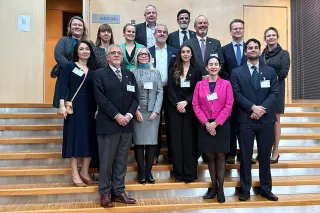How would Finland's electricity network manage if all wind turbines suddenly disconnect from the grid or battery storages failed at a critical moment? What risk do the millions of Chinese inverters connected to cloud systems, which link solar power plants to the grid, pose to the European electricity grid?
Read the summary
- Finland anticipates electricity consumption to triple by 2040 due to growing demands from new industries and electric vehicles, thereby putting pressure on existing grid capacities.
- The complexity of integrating new technologies with old systems in electricity grids introduces significant cybersecurity risks, which require advanced security management solutions.
- Decision-makers must ensure that security measures are integrated into grid expansion efforts, involving long-term strategic planning and investment to maintain a secure and reliable electricity infrastructure.
This summary is written by AI and checked by a human.
New forms of energy like solar and wind power as well as the electrification of industry, transport and heating require electricity grids to provide unprecedented capacity and flexibility. At the same time, it should be possible to manage the overall security of networks at a completely new level.
Europe is going through an historic structural change: the electricity grid infrastructure is being renewed and expanded very rapidly. The energy transition, electrification and green transition are driving large-scale investments. In practical terms, many European cities need to double their electricity grid capacity.
In Finland, hardly a day goes by without news of new data centre projects with massive electricity needs. Electric vehicles are also rapidly becoming more common. Estimates indicate that electricity consumption in Finland will increase to more than three times its current level by 2040. At the same time, connection requests related to production and consumption indicate exceptionally strong growth pressure.
The International Energy Agency (IEA) estimates that approximately 80 million kilometres of new or renewed power lines will be needed globally by 2040. This is equivalent to the current global grid and, when expressed in symbolic terms, means travelling from Earth to the moon and back about 100 times. Existing networks also require maintenance.
This means we are in the midst of an unprecedented grid construction boom, with practical issues such as the availability of copper for cables and transformers and the sufficiency of skilled labour being considered all over the world.
The big question is: can security keep up with this pace?
New equipment and systems are constantly being connected to electricity grids. Cyber security is built into the new solutions and we can assume it is up to date. However, old devices and equipment – sometimes decades old – still operate in the grid. The result is a mixed system with different generations of technologies operating alongside each other – and no comprehensive understanding of the whole assembly. This creates invisible vulnerabilities.
Increasingly smart grids require more advanced security management solutions. Cyber security, risk management and security of supply must evolve at the same pace as technology. For example, VTT’s smart grid research and testing platform supports network companies, system integrators and equipment developers in identifying and testing network vulnerabilities. However, we also need a clear division of responsibilities and guidance.
Electricity grids are a regulated operating environment, but the overall picture is complex. There are just under 80 distribution network companies in Finland, and each one has its own development plan. The Energy Authority is currently compiling a national overview of these companies.
A summary being completed this spring will hopefully show how comprehensive security has been genuinely integrated into planning and management – as a key starting point rather than simply being mentioned.
Security is not something we can take for granted. It must be built in a conscious manner.
Our critical infrastructure needs long-term and strategic steering. The energy transition provides opportunities but also presents new risks. Decision-makers are responsible for ensuring that we build quickly but also wisely. A safe, sustainable and reliable energy future does not develop by accident. It requires decisions, smart investments and overall management.






